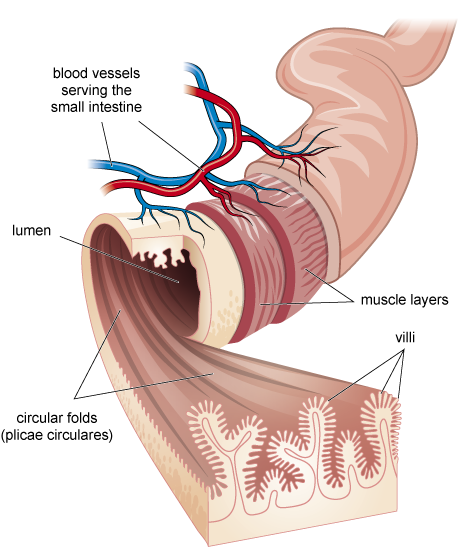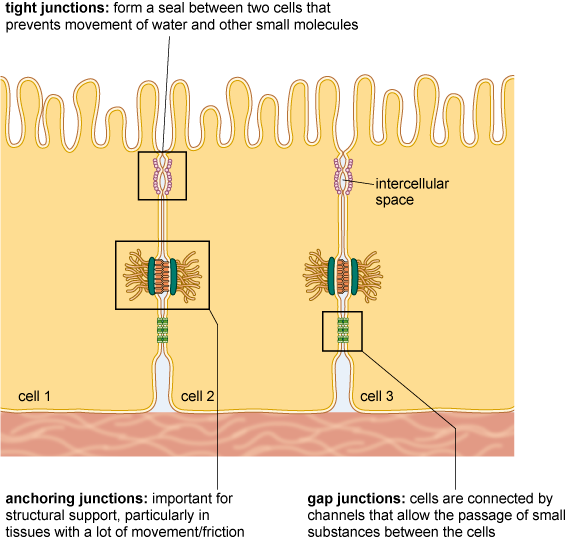2.4 Structural integrity of the gut wall
The human gut wall is made up of several layers of different tissue types, including muscle, nerves and blood vessels and an innermost mucosal layer. The cells of the mucosal layer of the small intestine secrete important enzymes for digestion of food and allow nutrients to pass through them into the bloodstream. They also secrete mucus to lubricate the contents in the gut tube. The inner layers of the gut wall are highly folded into finger-like projections known as villi, which increase the surface area of the gut (Figure 10).

-
Question 9
Why do you think a large surface area would be useful in the gut?
-
The large surface area created by the presence of villi and folds in the gut wall of the small intestine maximises the absorptive capacity of the gut (i.e. more of the nutrients obtained from the digestion of food substances, can be absorbed from the gut lumen).
The mucosal cells of the innermost layer are tightly bound to one another, to prevent pathogens in the food from crossing over into the tissue of the gut or into the bloodstream. These cells are held together by protein complexes known as tight junctions (Figure 11).

A healthy gut microbiome helps to maintain the structural integrity of the gut wall in several ways. Firstly, it helps to regulate the proteins that are made by the human gut cells which are needed to secure the cells to each other via tight junctions. This helps to maintain the structural integrity of the gut wall and prevent it from becoming permeable to damaging substances. Additionally, the SCFAs produced by the microbiome modify the production of mucus by the gut wall, and affect how the immune cells located in the gut respond to pathogenic invaders (Sanders, 2021). These all have an important role in the health of the gut wall, and consequently the human host.
Dysbiosis is associated with increased permeability of the gut. That is, the tight junctions between the cells of the gut wall become weakened and substances that normally would not be able to cross the gut wall can enter the local tissue or bloodstream. The presence of such substances triggers an immune response, leading to significant inflammation of the gut. Several health conditions are associated with this increased permeability and inflammation, as you’ll learn later in this course.
